From the westernmost foothills of Sierra Morena to the Atlantic coast, the traveler who enters the province of Huelva enjoys, under a bright sky, of a prodigal and delicate nature. The climate of the mountains, wet and smooth, softens the high temperatures of summer and the rigors of winter. The center, hotter and drier, cools off with the sunset sea breezes.
- Nuns Square
- Of. Martin Alonso Pinzón
- Huelva City Council
Direction: Constitution Plaza, s/n, 21003 Huelva
Schedule: Monday to Friday of 8:00 a 15:00 h
Phone: 959 21 01 01 - Monument to the Virgen del Rocío
Direction: Of. Martin Alonso Pinzón, 24, 21003 Huelva - Cathedral of Our Lady of Mercy
Direction: Plaza de la Merced, S/N, 21002 Huelva
Schedule: Tuesday to Friday from 11:00 a 13:00 h. Monday to Sunday from 18:00 a 20:00 h
Phone: 959 25 21 00 - Reina Victoria neighborhood
- Tinto dock
Direction: Levante Pier Bridge, s/n, 21001 Huelva
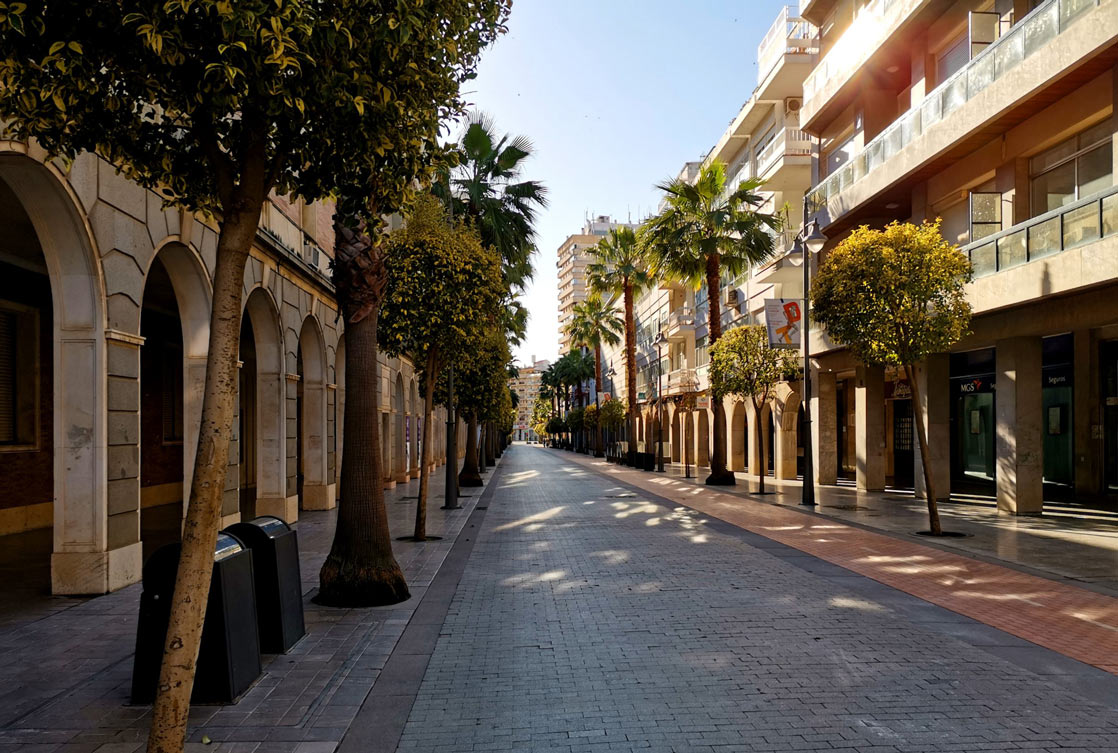
There is no better way to start the day in the Huelva capital than having a nutritious breakfast next to the Nuns Square (1). This open space located in the historic center of the city replaced the stables of the Palace of the Dukes of Medina Sidonia, located on the parallel street of the same name. Next to it stands the Mudejar style convent of the Augustinian Mothers, that affectionately endows the place with a name. Its rectangular floor plan houses a music band and four newsagents., restoration and information. In its eastern part stands the statue of Christopher Columbus, who points out in the direction of the ocean, flanked by a small fountain that refreshes the environment with its water vapor. In the surroundings of the square we will find the building of the old Bank of Spain and the Hotel Paris Building, Sub-headquarters of the Provincial Council of Huelva.
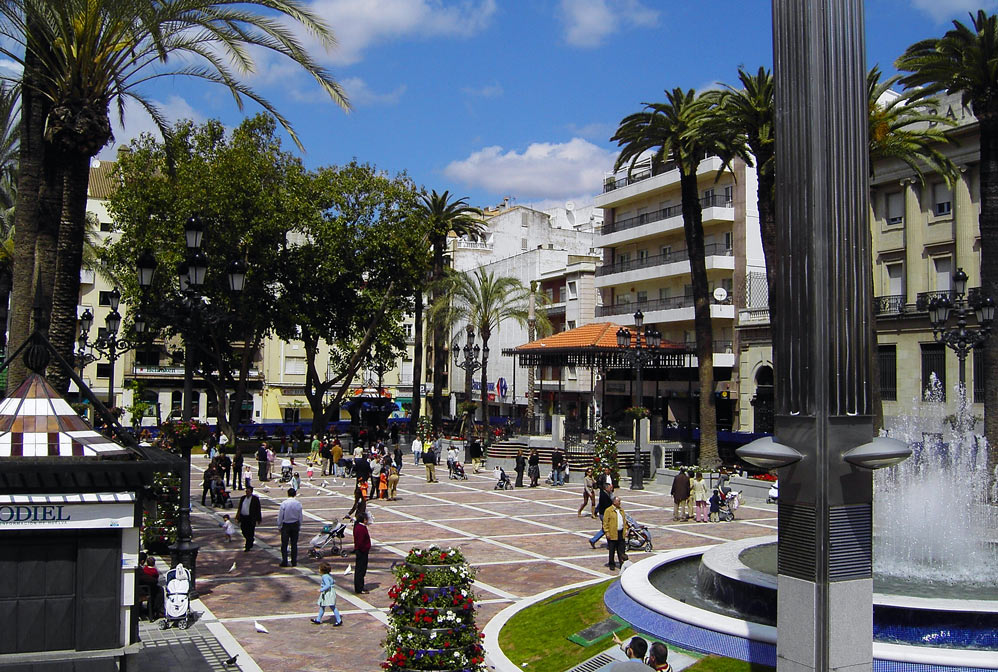
Once the batteries are recharged and we take a walk around the square, we will take the avenue Martin Alonso Pinzón (2). A little more than a hundred meters away we will come across the building of the Huelva City Council (3), executed by the architect Alejandro Herrero on part of the site of the old convent of San Francisco. Of its structure, the articulation of its dependencies around a large central patio and the turrets with sharp spiers that finish off each corner stands out..
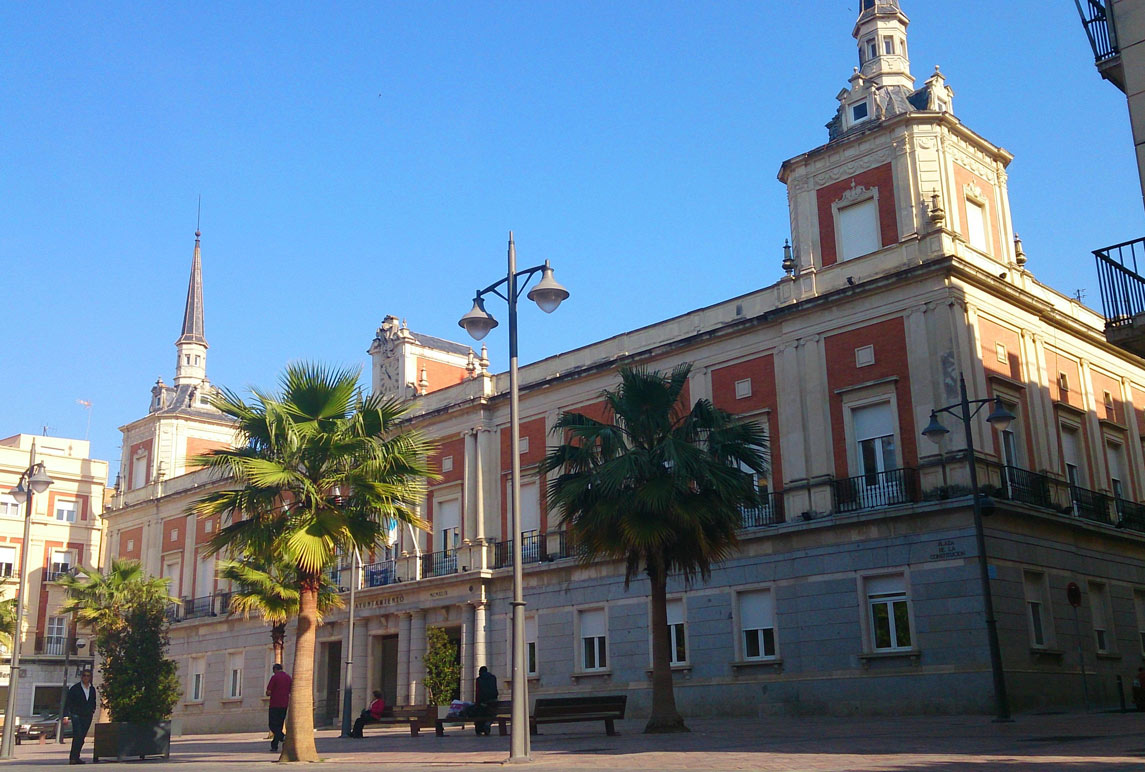
We will continue down the Martín Alonso Pinzón street, also known as the Gran Vía de Huelva. Walking on its semi-pedestrianized pavement, commercial and gastronomic smells will reach us, but also the bureaucratic and architectural squalor of other buildings of the public entity. Then, we will reach the Plaza del Punto. There we will meet, almost face down, with the monument to the Virgen del Rocío (4), a bronze sculpture that represents Huelva's passion for the festivities celebrated in the most famous pilgrimage in Andalusia. Its appeal is undeniable. The sculptural group represents the procession of the Lily of the Marshes. The Lady is carried on the shoulders of sixty figures of strange and captivating religious brilliance, among which the artist himself reflected raising his son from 22 months.
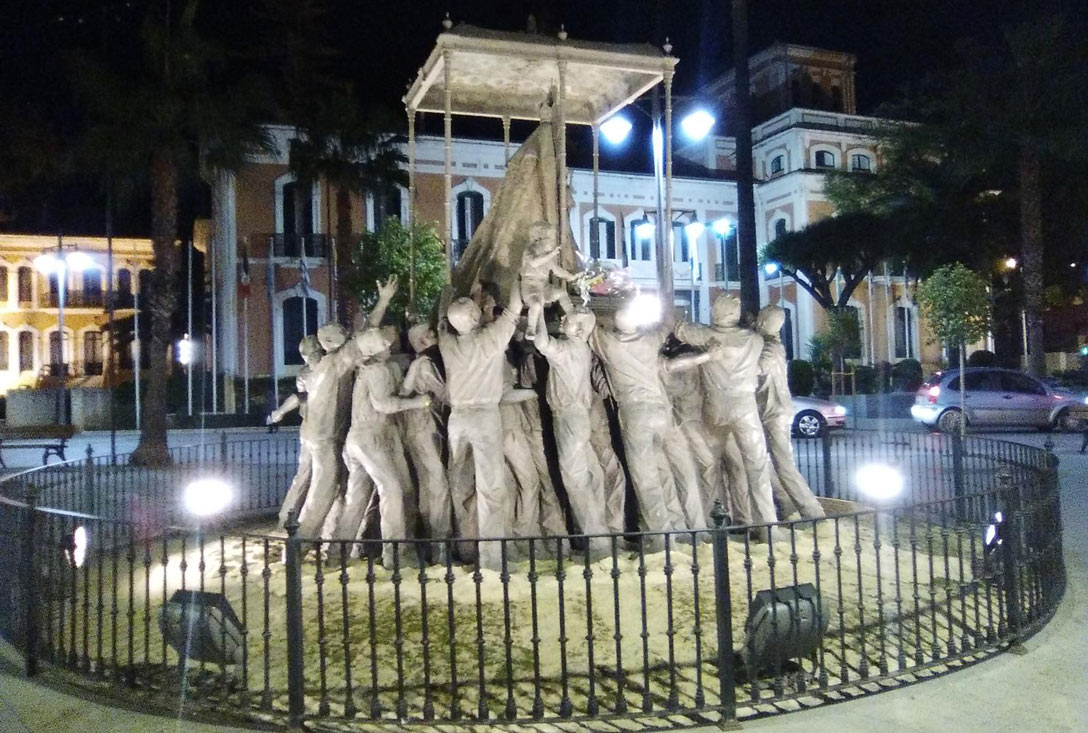
At the northern end of the historic center stands the Cathedral of Our Lady of Mercy (5), whose origin dates back to the convent of Mercedarian fathers built in 1605 on the old Hermitage of San Roque. The front of the cathedral, baroque style, it is organized in three horizontal bodies separated by cornices, having a semicircular gate in the lower one and a large altarpiece with sculptures in the central and upper one. The sides are finished with belfries for the bells. The interior of the temple currently has three naves of five sections separated by semicircular arches and a central transept., and among whose works of art the Virgen de la Cinta stands out, by the sculptor Martínez Montañés, and the Christ of Jerusalem.

We now move to a part of the city that is a historical witness to the industrial boom experienced by the province of Huelva during the 19th and 20th centuries., the call Reina Victoria neighborhood (6). It is an old working-class neighborhood - the name by which it is also known - built in 1916 on a small hill, that includes almost three hundred single-family homes that show off an eclectic architectural style, Andalusian mix, neo-mudejar and colonial. Its layout in the form of a garden city was imported by the English who came from the Rio Tinto Company to exploit the mineral resources of the area., and on their way they left this legacy, a nature-oriented city model.
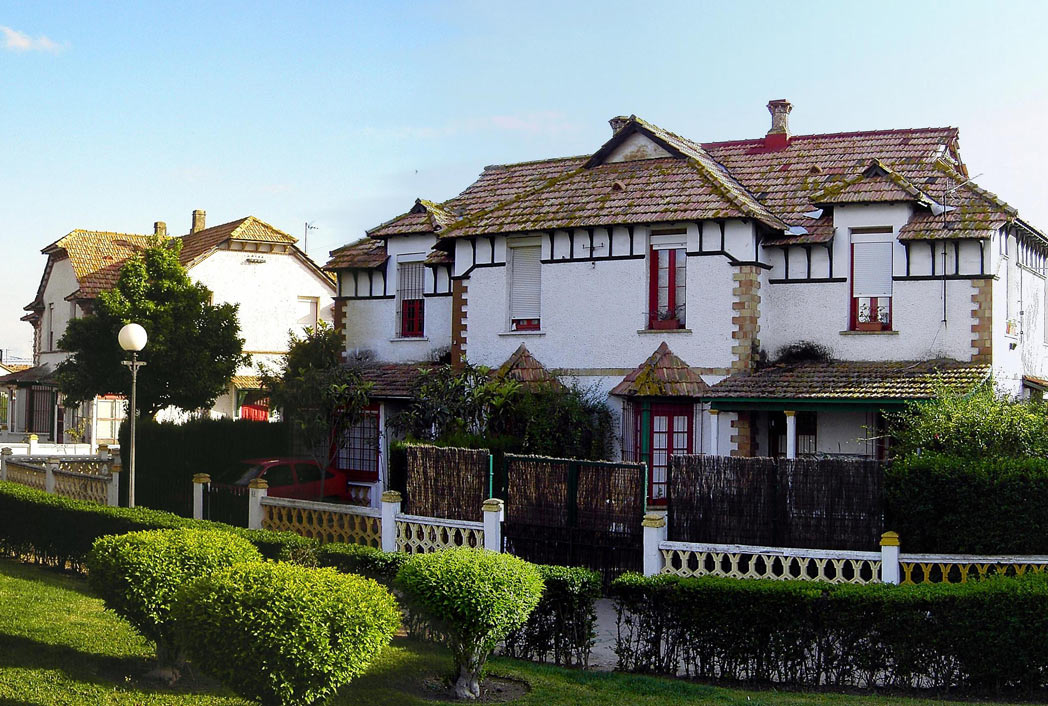
At a distance of a kilometer and a half from this part of the city is the Tinto dock (7), another consequence of the English presence in the city. It was constructed in 1876 on the course of the river Odiel, and for a hundred years it was used to transport the mineral from the deposits in the north of the province to the port of the capital. Today, The best thing that this curious place offers us is a quiet walk and unparalleled views of the nearby natural park of the Odiel marshes.
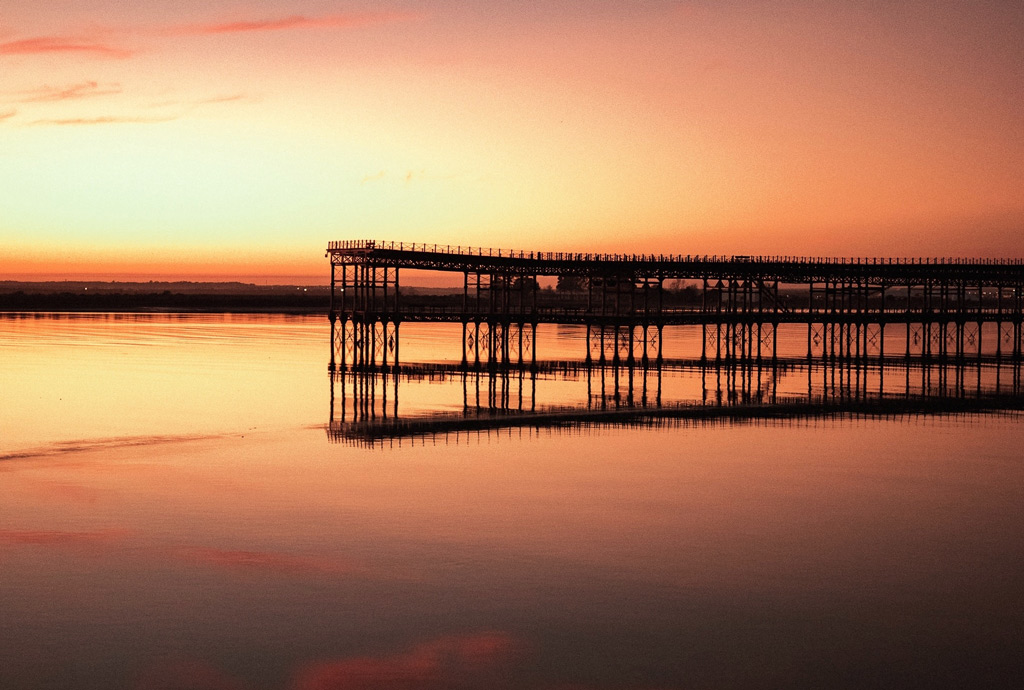
- Natural Area of the Marismas del Odiel
Direction: Juan Carlos I Dam Road, Km 3, Huelva
Schedule: of 15 from June to 15 of September, of 11:00 a 23:00 h. Of 16 from september to 14 of June, weekends and holidays, from the 11 from the morning until 20 hours of the night
Phone: 959 07 10 15 - Punta Umbría
- Punta Umbría Beach
- Monument to the Discovering Faith
Direction: Of. Francisco Montenegro, S/N, 21001 Huelva
Schedule: every day 24 hours - La Rabida Monastery
Direction: Disseminated De la Rabida, s/n, 21819 Palos de la Frontera, Huelva
Schedule: Tuesday to Sunday from 10:00 a 18:00 h
Phone: 959 35 04 11 - Dock of the Caravels
Direction: Place of La Rabida, s/n, 21819 Palos de la Frontera, Huelva
Schedule: Tuesday to Sunday from 10:00 a 19:30 h
Phone: 959 53 05 97 - Celestino Mutis Botanical Park
Direction: Place of La Rabida, s/n, 21819 La Rabida, Huelva
Schedule:
morning: Tuesday to Saturday from 10:00 a 13:00 h
Afternoon: Tuesday to Saturday from 17:00 a 21:00 h
Phone: 959 49 46 00
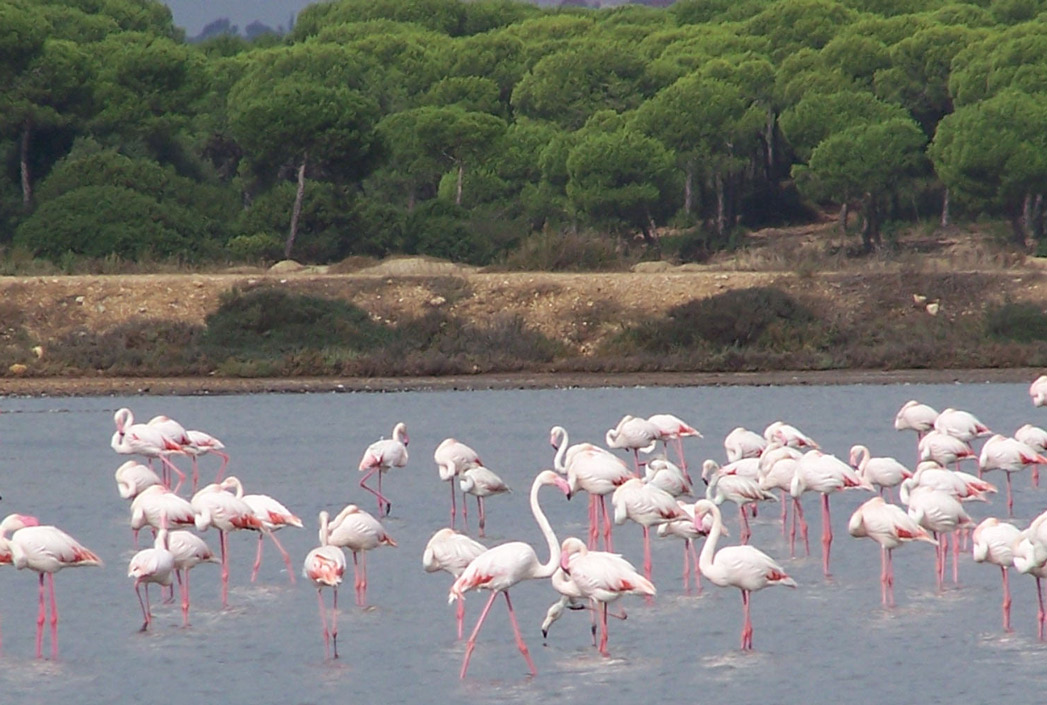
Although the city of Huelva has corners that are worth visiting, its closest environment offers a series of interesting places that will delight travelers of all kinds: urban environments, natural, gastronomic and cultural experiences that will occupy every moment of the day with indelible memories.
A) Yes, First thing in the morning we will head along the Huelva-Punta Umbría motorway towards the Natural Area of the Marismas del Odiel (1). Here, at the confluence of the mouths of the Tinto and Odiel rivers, a complex estuary is integrated that gives rise to an extensive variety of landscapes with twisted arms of water, gaps, salinas, islas, beaches and forests. The mixture of fresh and salt water has given rise to an estuary loaded with nutritious sediments that make up the main food base for numerous species of birds that stop here on their migration processes between Europe and Africa.. Those who wish to observe them or walk along one of their very long paths enjoying the rich habitat that has been formed in this space declared a Biosphere Reserve by UNESCO and a Special Protection Area for Birds will enjoy this environment..
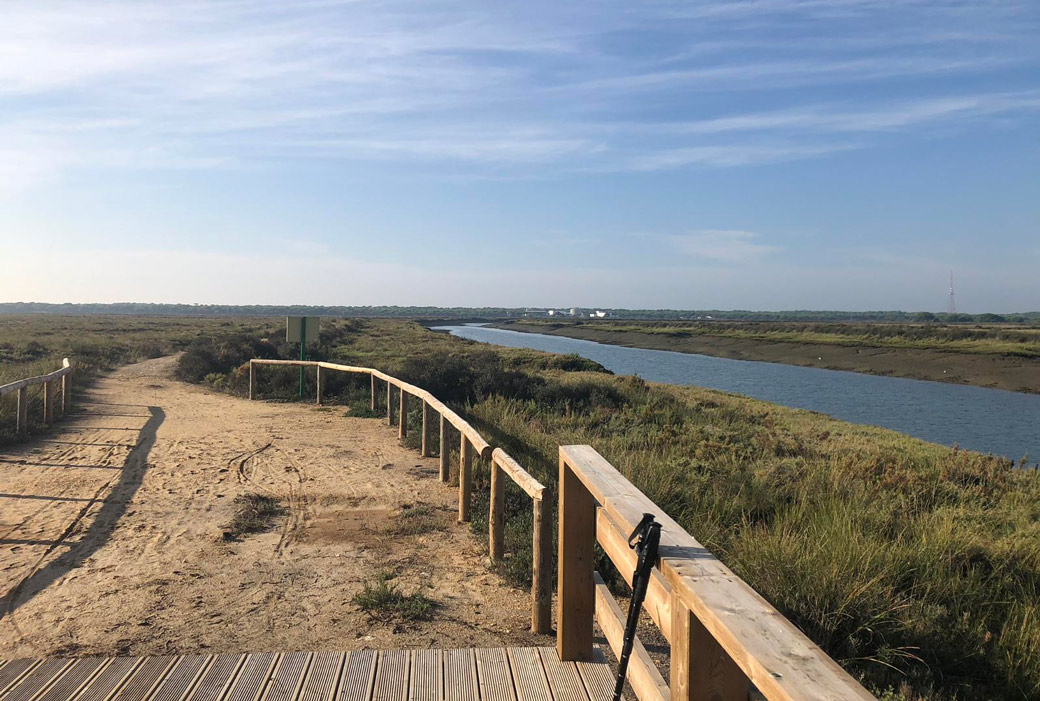
Past midday, travelers will be able to follow the highway towards the city of Punta Umbría (2), nestled south of the estuary. This municipality of 15.000 inhabitants consists of numerous quality tourist services, because it has the playa (3) more urbanized and frequented by swimmers from all over the area. Enjoy its clean sands, fine and golden and its kind climate seems essential if you plan to spend a couple of days or a weekend in the city of Huelva and its surroundings. Here, travelers will have at their disposal a whole range of excellent restaurants where they can consume products from the land while enjoying a magnificent atmosphere next to the Atlantic Ocean.
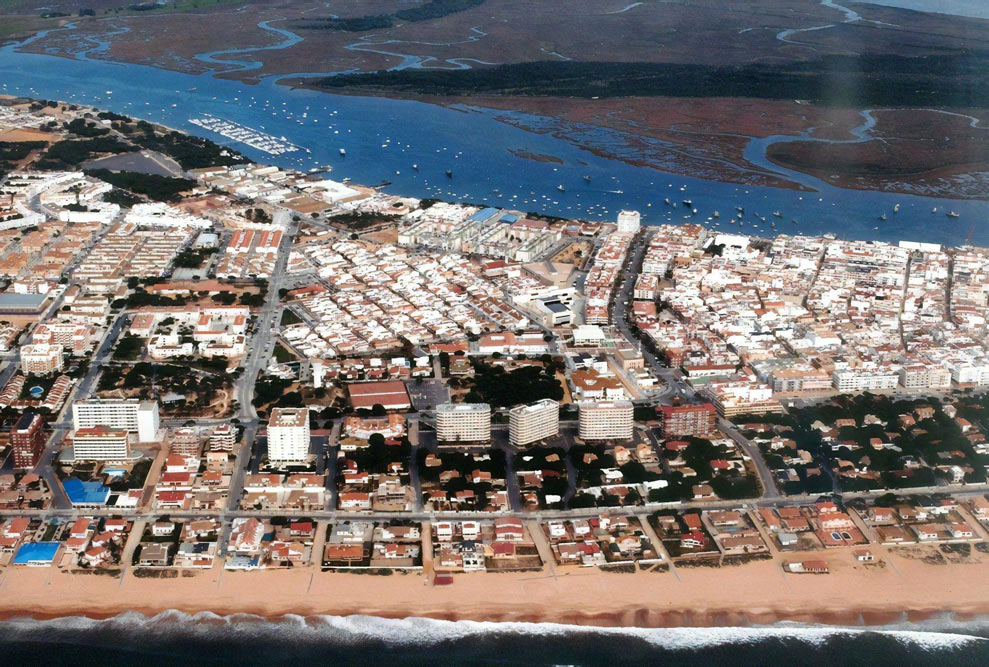
It is time to undo the path traveled and return to Huelva via the highway. This time we will head south along Francisco Montenegro Avenue until we reach the Monument to the Discovering Faith (4), a commemorative sculpture given by the United States to Spain and located in Punta de Sebo, at the confluence between the Tinto and Odiel rivers. Approximately 37 meters, represents a human figure leaning on a Franciscan cross. on his pedestal, which can be accessed, bas-reliefs are found that imagine the Aztec cultures, inca, mayan and christian.
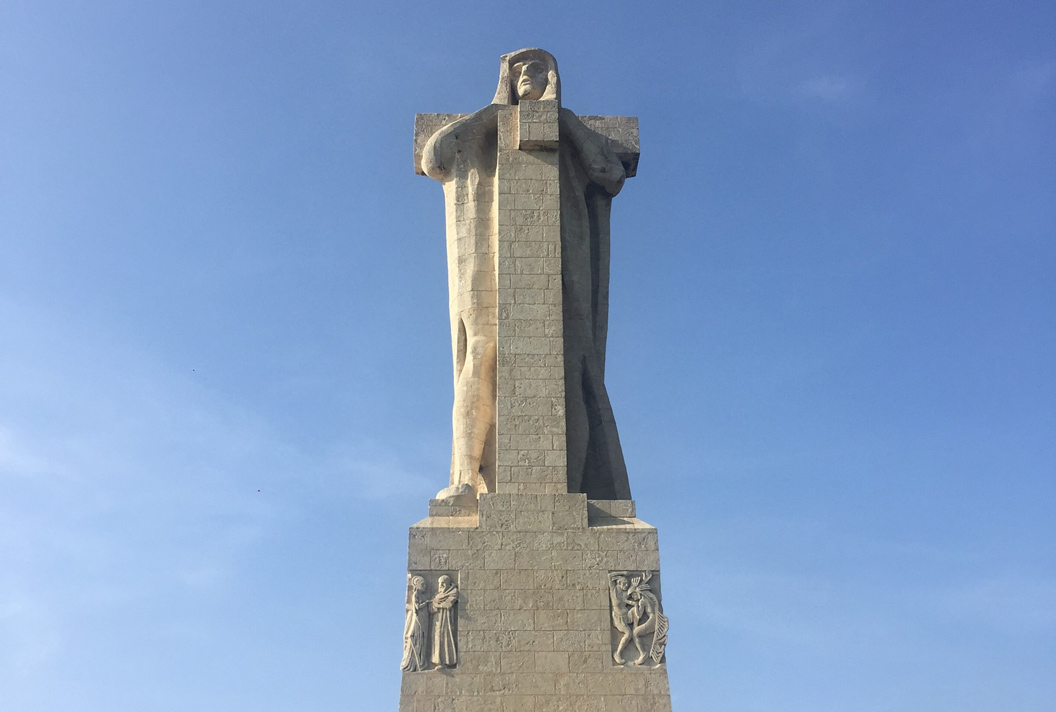
A few kilometers away is La Rábida, an area belonging to the municipality of Palos de la Frontera that encompasses a series of attractions with cultural activities: the La Rabida Monastery (5), the Dock of the Caravels (6) Y Celestino Mutis Botanical Park (7), three enclaves that witnessed the history that took place between Spain and the American peoples. The first is a Franciscan monastery that boasts of having hosted Christopher Columbus years before leaving for the New World., when he was still planning the trip. The second is a natural space, alive and changing, that since its inauguration shows visitors a growing collection of flora collected from the five continents. The third is a museum that offers reproductions of the three ships that left for the Americas.
